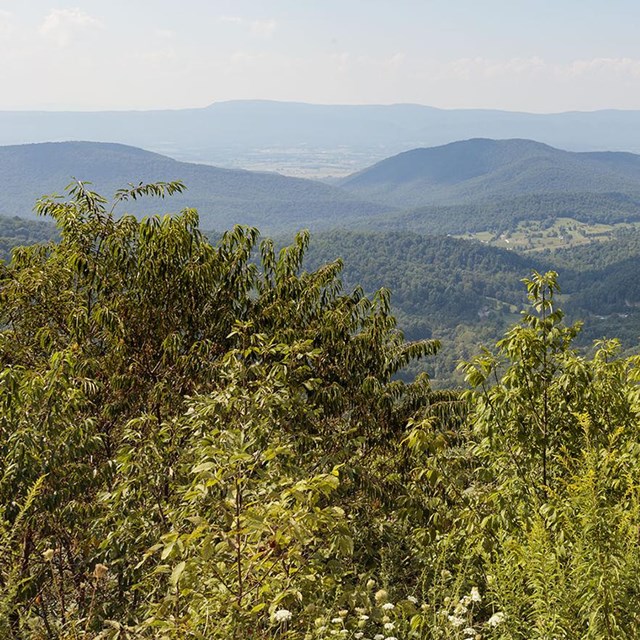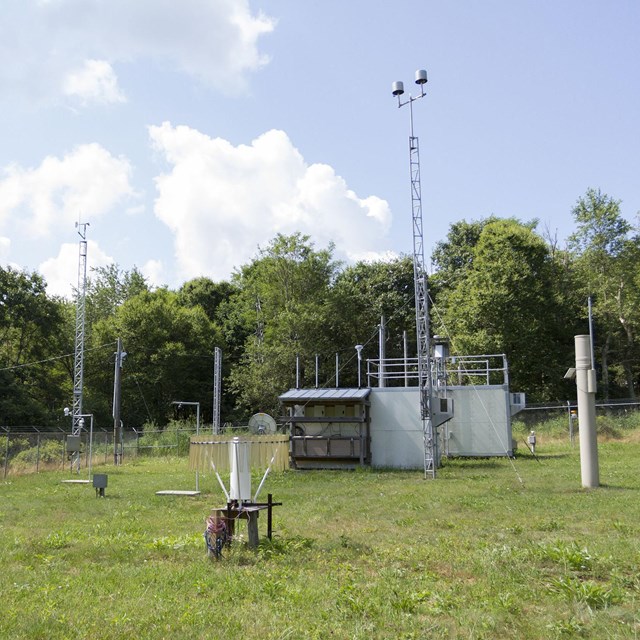
NPS / Brett Raeburn
Shenandoah National Park is one of ten parks in the Mid-Atlantic Network which is part of a nation-wide effort of the National Park Service to generate scientifically sound information on the changing conditions of park ecosystems. Park staff conduct natural resource management activities, but also monitor the status and long-term trends of natural resources in order to better inform management decisions. Each year, park staff and volunteers collect information for several natural resource monitoring programs.
To learn more about these programs and key findings, choose from the options below.
Monitoring Programs
-
 Air Quality
Air QualityPark managers benefit from knowing the type and extent of various air pollutants in order to evaluate their impacts on park resources.
-
 Benthic Macroinvertebrates
Benthic MacroinvertebratesStaff at this park have sampled benthic macroinvertebrates for 25 years, initially in response to gypsy moth defoliation.
-
 Fish
FishThe relatively pristine and high elevation streams found in Shenandoah currently support increasingly rare coldwater fish communities.
-
 Forest Vegetation
Forest VegetationAll Mid-Atlantic Network parks have forests that form an essential part of the landscape and provide habitat for a diversity of wildlife.
-
 Water Quality & Quantity
Water Quality & QuantityMonitoring water quality & quantity helps the National Park Service fulfill its duty to protect pristine (or improve impaired) park waters.
-
 Weather & Climate
Weather & ClimateClimate is a dominant factor driving the physical and ecologic processes affecting Mid-Atlantic Network parks.
Website Articles
- Type: Article
- Locations: Shenandoah National Park
- Offices: Geologic Resources Division
- Type: Article
- Locations: Hopewell Culture National Historical Park,Hopewell Furnace National Historic Site,Horseshoe Bend National Military Park,Hot Springs National Park,Hovenweep National Monument, more »
- Offices: Appalachian Highlands Inventory & Monitoring Network,Arctic Inventory & Monitoring Network,Central Alaska Inventory & Monitoring Network,Chihuahuan Desert Inventory & Monitoring Network,Cumberland Piedmont Inventory & Monitoring Network, more »

To steward amphibians effectively, managers need basic information about which species live in parks. But species lists need constant maintenance to remain accurate. Due to recent efforts, the National Park Service now has an up-to-date amphibian species checklist for almost 300 parks. This information can serve as the basis for innumerable conservation efforts across the nation.
- Type: Article
- Locations: Shenandoah National Park
- Offices: Mid-Atlantic Inventory & Monitoring Network
- Type: Article
- Locations: Shenandoah National Park

Shenandoah National Park supports a number of rare species, many of which can be found at higher elevations in the park. Researchers have recently discovered that several rare bat species also prefer the park's mountaintops during summer months. Scientists are using acoustic detectors, radio telemetry, and mist nets, to better understand the park's bat communities.
Park Monitoring Documents
Source: Data Store Saved Search 4876 (results presented are a subset). To search for additional information, visit the Data Store.
Source: Data Store Saved Search 4879 (results presented are a subset). To search for additional information, visit the Data Store.
Last updated: January 21, 2022




